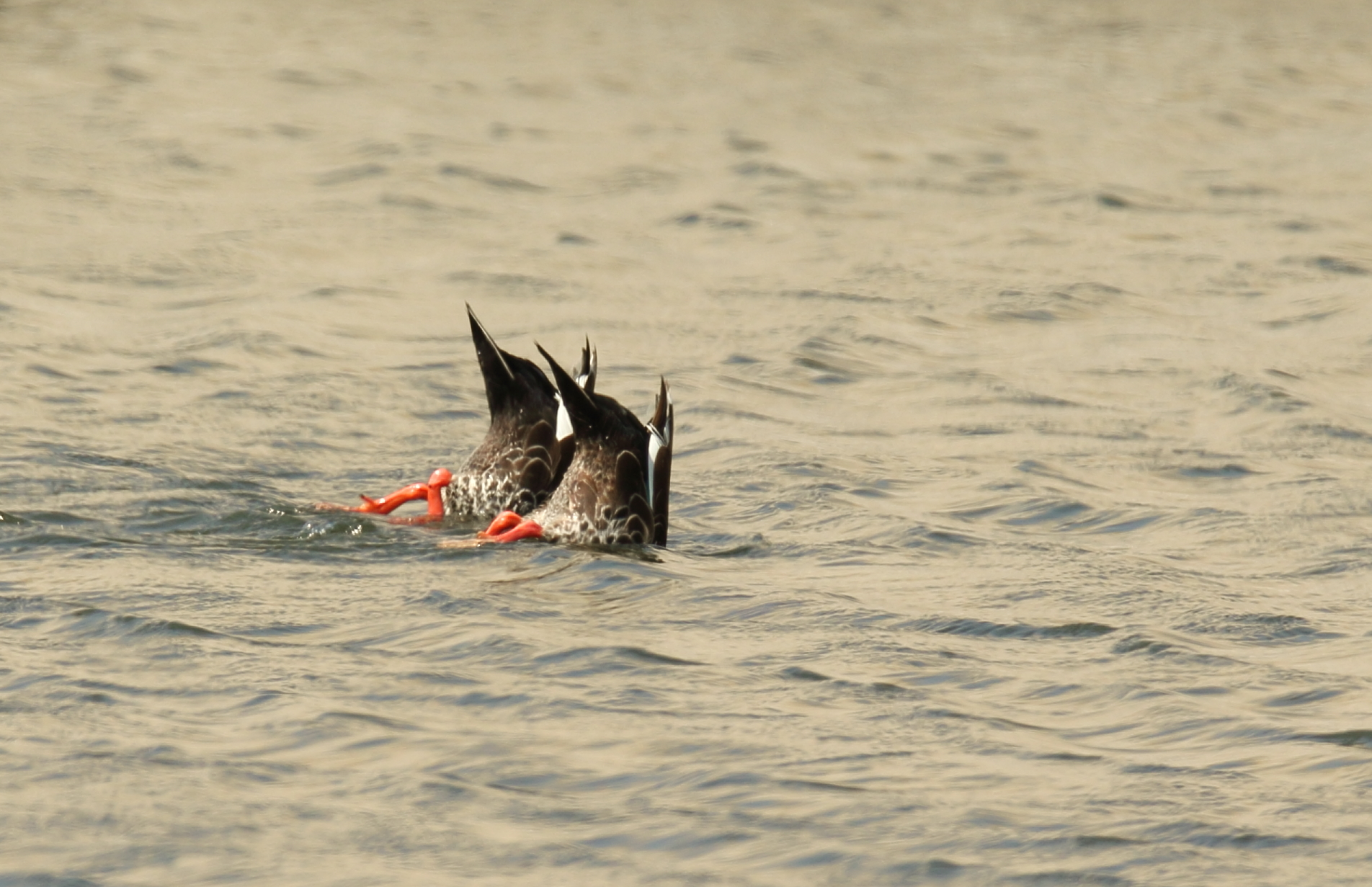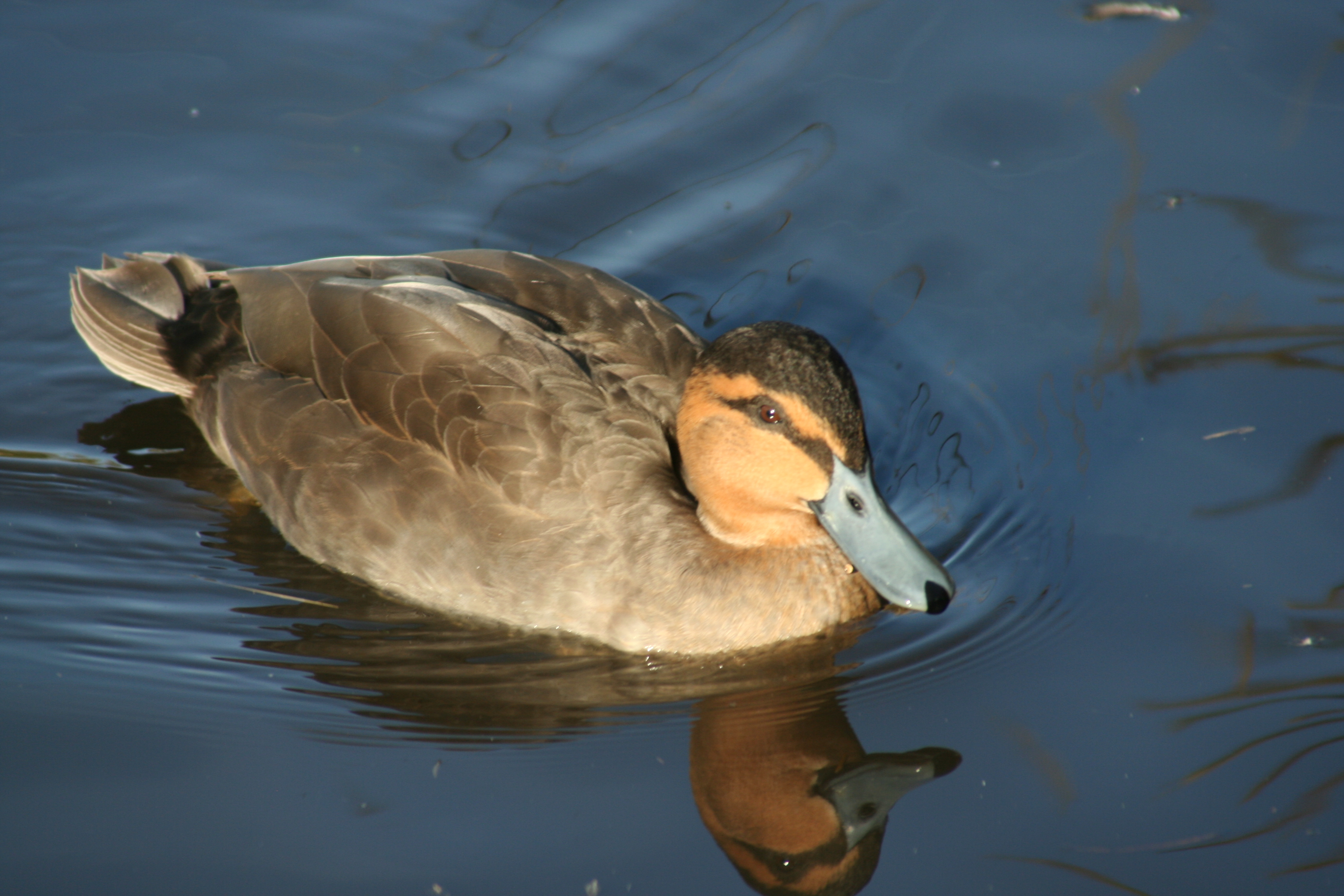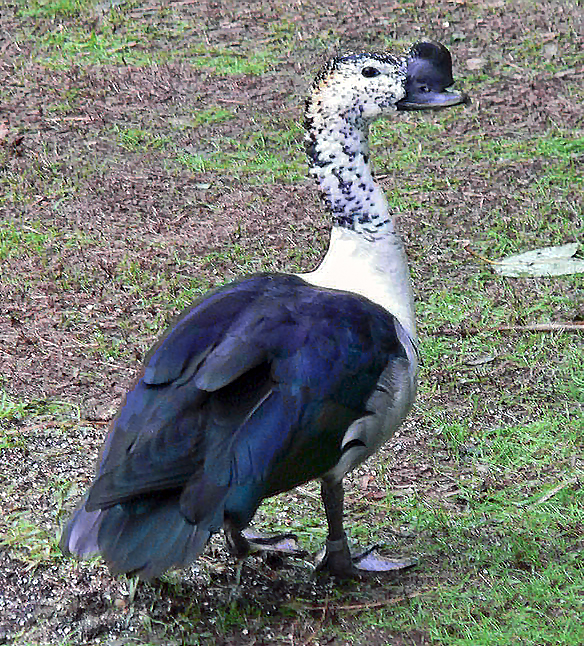Dabbling Duck on:
[Wikipedia]
[Google]
[Amazon]
The Anatinae are a


 The following genera are (with one exception) unequivocal dabbling ducks:
*''
The following genera are (with one exception) unequivocal dabbling ducks:
*'' The three known genera and four known species of
The three known genera and four known species of 


subfamily
In biological classification, a subfamily (Latin: ', plural ') is an auxiliary (intermediate) taxonomic rank, next below family but more inclusive than genus
Genus ( plural genera ) is a taxonomic rank used in the biological classifica ...
of the family
Family (from la, familia) is a group of people related either by consanguinity (by recognized birth) or affinity (by marriage or other relationship). The purpose of the family is to maintain the well-being of its members and of society. Idea ...
Anatidae
The Anatidae are the biological family of water birds that includes ducks, geese, and swans. The family has a cosmopolitan distribution, occurring on all the world's continents except Antarctica. These birds are adapted for swimming, flo ...
(swan
Swans are birds of the family Anatidae within the genus ''Cygnus''. The swans' closest relatives include the geese and ducks. Swans are grouped with the closely related geese in the subfamily Anserinae where they form the tribe Cygnini. Som ...
s, geese and duck
Duck is the common name for numerous species of waterfowl in the family Anatidae. Ducks are generally smaller and shorter-necked than swans and geese, which are members of the same family. Divided among several subfamilies, they are a form ...
s). Its surviving members are the dabbling ducks, which feed mainly at the surface rather than by diving. The other members of the Anatinae are the extinct moa-nalo
The moa-nalo are a group of extinct aberrant, goose-like ducks that lived on the larger Hawaiian Islands, except Hawaii itself, in the Pacific. They were the major herbivores on most of these islands until they became extinct after human settle ...
, a young but highly apomorphic
In phylogenetics, an apomorphy (or derived trait) is a novel character or character state that has evolved from its ancestral form (or plesiomorphy). A synapomorphy is an apomorphy shared by two or more taxa and is therefore hypothesized to have ...
lineage derived from the dabbling ducks.
There has been much debate about the systematical status and which ducks belong to the Anatinae. Some taxonomic authorities only include the dabbling ducks and their close relatives, the extinct moa-nalos. Alternatively, the Anatinae are considered to include most "duck
Duck is the common name for numerous species of waterfowl in the family Anatidae. Ducks are generally smaller and shorter-necked than swans and geese, which are members of the same family. Divided among several subfamilies, they are a form ...
s", and the dabbling ducks form a tribe
The term tribe is used in many different contexts to refer to a category of human social group. The predominant worldwide usage of the term in English is in the discipline of anthropology. This definition is contested, in part due to confl ...
Anatini within these. The classification as presented here more appropriately reflects the remaining uncertainty about the interrelationships of the major lineages of Anatidae
The Anatidae are the biological family of water birds that includes ducks, geese, and swans. The family has a cosmopolitan distribution, occurring on all the world's continents except Antarctica. These birds are adapted for swimming, flo ...
(waterfowl).
Systematics
The dabbling duck group, of worldwide distribution, was delimited in a 1986 study to include eight genera and some 50–60 living species. However, Salvadori's teal is almost certainly closely related to the pink-eared duck, and other genera are likewise of unresolved affiliation. The peculiar marbled duck, formerly tentatively assigned to the dabbling ducks, is thought to be a diving duck or even a distinct subfamily. This group of ducks has been so named because its members feed mainly on vegetable matter by upending on the water surface, or grazing, and only rarely diving. These are mostly gregarious ducks of freshwater or estuaries. Thesebird
Birds are a group of warm-blooded vertebrates constituting the class Aves (), characterised by feathers, toothless beaked jaws, the laying of hard-shelled eggs, a high metabolic rate, a four-chambered heart, and a strong yet lightweig ...
s are strong fliers and northern species are highly migratory. Compared to other types of duck, their legs are located more towards the centre of their bodies. They walk well on land, and some species feed terrestrially.
"Puddle ducks" generally feed on the surface of the water or feed on very shallow bottoms. They are not equipped to dive down several feet like their diving counterparts. The most prominent difference between puddle ducks and divers are the size of the feet. A puddle duck's feet are generally smaller because they do not need the extra propulsion to dive for their forage.
Another distinguishing characteristic of puddle ducks when compared to diving ducks is the way in which they take flight when spooked or are on the move. Puddle ducks spring straight up from the water, but diving ducks need to gain momentum to take off, so they must run across the water a short distance to gain flight.
History of classification
Traditionally, most ducks were assigned to either the shelducks, the perching ducks, and the dabbling and diving ducks; the latter two were presumed to make up the Anatinae. However, the perching ducks turned out to be aparaphyletic
In taxonomy, a group is paraphyletic if it consists of the group's last common ancestor and most of its descendants, excluding a few monophyletic subgroups. The group is said to be paraphyletic ''with respect to'' the excluded subgroups. In ...
assemblage of various tropical
The tropics are the regions of Earth surrounding the Equator. They are defined in latitude by the Tropic of Cancer in the Northern Hemisphere at N and the Tropic of Capricorn in
the Southern Hemisphere at S. The tropics are also referred to ...
waterfowl that happened to evolve the ability to perch well in their forested habitat
In ecology, the term habitat summarises the array of resources, physical and biotic factors that are present in an area, such as to support the survival and reproduction of a particular species. A species habitat can be seen as the physical ...
. Several of these, such as the Brazilian teal, were subsequently assigned to the Anatinae.
As for the diving ducks, mtDNA cytochrome ''b'' and NADH dehydrogenase subunit
Subunit may refer to:
* Subunit HIV vaccine, a class of HIV vaccine
*Protein subunit, a protein molecule that assembles with other protein molecules
*Monomer, a molecule that may bind chemically to other molecules to form a polymer
* Sub-subunit, ...
2 sequence
In mathematics, a sequence is an enumerated collection of objects in which repetitions are allowed and order matters. Like a set, it contains members (also called ''elements'', or ''terms''). The number of elements (possibly infinite) is called ...
data indicates that they are fairly distant from the dabbling ducks. The morphological similarities are due to convergent evolution
Convergent evolution is the independent evolution of similar features in species of different periods or epochs in time. Convergent evolution creates analogous structures that have similar form or function but were not present in the last com ...
.
In addition, the genus ''Anas
''Anas'' is a genus of dabbling ducks. It includes the pintails, most teals, and the mallard and its close relatives. It formerly included additional species but following the publication of a molecular phylogenetic study in 2009 the genus was s ...
'', as traditionally defined, is not monophyletic; several South America
South America is a continent entirely in the Western Hemisphere and mostly in the Southern Hemisphere, with a relatively small portion in the Northern Hemisphere at the northern tip of the continent. It can also be described as the sou ...
n species belong to a distinct clade which would include the ''Tachyeres'' steamer-ducks. Other species, such as the Baikal teal, should also be considered distinct.

Genera

 The following genera are (with one exception) unequivocal dabbling ducks:
*''
The following genera are (with one exception) unequivocal dabbling ducks:
*''Amazonetta
The Brazilian teal or Brazilian duck (''Amazonetta brasiliensis'') is the only duck in the genus ''Amazonetta''. It is widely distributed in eastern South America.
Taxonomy
The Brazilian teal was formally described in 1789 by the German natu ...
'' – status not fully resolved, most likely a dabbling duck
*''Sibirionetta'' – Baikal teal
*'' Spatula''
*'' Mareca''
*''Lophonetta'' – crested duck
*''Speculanas'' –bronze-winged duck
The bronze-winged duck (''Speculanas specularis'') also known as the spectacled duck, is a dabbling duck and the sole member of its genus ''Speculanas''. It is often placed in ''Anas'' with most other dabbling ducks, but its closest relative is e ...
*''Anas
''Anas'' is a genus of dabbling ducks. It includes the pintails, most teals, and the mallard and its close relatives. It formerly included additional species but following the publication of a molecular phylogenetic study in 2009 the genus was s ...
''
 The three known genera and four known species of
The three known genera and four known species of moa-nalo
The moa-nalo are a group of extinct aberrant, goose-like ducks that lived on the larger Hawaiian Islands, except Hawaii itself, in the Pacific. They were the major herbivores on most of these islands until they became extinct after human settle ...
s all became extinct around AD 1000. They formerly occurred on the Hawaiian Islands and were derived from dabbling ducks, possibly even from a close ancestor of the mallard:
*'' Chelychelynechen''
*'' Thambetochen''
*'' Ptaiochen''



Subfossil
A fossil (from Classical Latin , ) is any preserved remains, impression, or trace of any once-living thing from a past geological age. Examples include bones, shells, exoskeletons, stone imprints of animals or microbes, objects preserved ...
remains of a small, flightless dabbling duck have been recovered on Rota
Rota or ROTA may refer to:
Places
* Rota (island), in the Marianas archipelago
* Rota (volcano), in Nicaragua
* Rota, Andalusia, a town in Andalusia, Spain
* Naval Station Rota, Spain
People
* Rota (surname), a surname (including a list of peop ...
in the Mariana Islands. These cannot be assigned to a known genus, but probably are closest to ''Anas''. A most bizarre duck-like bird, '' Talpanas lippa'' has been found on the Hawaii
Hawaii ( ; haw, Hawaii or ) is a state in the Western United States, located in the Pacific Ocean about from the U.S. mainland. It is the only U.S. state outside North America, the only state that is an archipelago, and the only stat ...
an island of Kauai
Kauai, () anglicized as Kauai ( ), is geologically the second-oldest of the main Hawaiian Islands (after Niʻihau). With an area of 562.3 square miles (1,456.4 km2), it is the fourth-largest of these islands and the 21st largest islan ...
. Because of its unique apomorph
In phylogenetics, an apomorphy (or derived trait) is a novel character or character state that has evolved from its ancestral form (or plesiomorphy). A synapomorphy is an apomorphy shared by two or more taxa and is therefore hypothesized to have ...
ies (it seems to have had small eyes high and far back on its head), the placement of this anatid
The Anatidae are the biological family of water birds that includes ducks, geese, and swans. The family has a cosmopolitan distribution, occurring on all the world's continents except Antarctica. These birds are adapted for swimming, floating o ...
is likewise unresolved; only dabbling ducks and true geese are with certainty known to have colonized the Hawaiian archipelago
The Hawaiian Islands ( haw, Nā Mokupuni o Hawai‘i) are an archipelago of eight major islands, several atolls, and numerous smaller islets in the North Pacific Ocean, extending some from the island of Hawaii in the south to northernmost K ...
.
Another bizarre insular anatine was ''Bambolinetta
''Bambolinetta lignitifila'' is a fossil species of waterfowl from the Late Miocene of Italy, now classified as the sole member of the genus ''Bambolinetta''. First described in 1884 as a typical dabbling duck, it was not revisited until 2014, w ...
'' from the Late Miocene
The Miocene ( ) is the first geological epoch of the Neogene Period and extends from about (Ma). The Miocene was named by Scottish geologist Charles Lyell; the name comes from the Greek words (', "less") and (', "new") and means "less recen ...
of Tuscana, then part of the Tuscano-Sardinian insular landmass. Flightless or at least a poor flyer, it instead shows adaptations for wing-propelled diving, occupying a similar ecological niche to that of penguin
Penguins (order Sphenisciformes , family Spheniscidae ) are a group of aquatic flightless birds. They live almost exclusively in the Southern Hemisphere: only one species, the Galápagos penguin, is found north of the Equator. Highly adap ...
s and plotopterids.
Frequently placed into the Anatinae are these genera, whose relationships must be considered uncertain at present:
*†'' Chenoanas''?
*†'' Dunstanetta'' (Johnstone's duck)
*†'' Lavadytis''
*†'' Pinpanetta''
*†'' Tirarinetta''
*'' Oxyurini'' (stiff-tailed ducks)
**'' Heteronetta'' (black-headed duck)
**'' Nomonyx'' (masked duck)
**'' Oxyura''
*''Biziura
''Biziura'' is a genus of stiff-tailed ducks endemic to Australasia and containing one living and one subfossil species.
Species
* †''B. delautouri'' Forbes, 1892 – New Zealand musk duck – previously endemic to New Zealand, and occurrin ...
'' – Oxyurini?
*''Aix
Aix or AIX may refer to:
Computing
* AIX, a line of IBM computer operating systems
*An Alternate Index, for a Virtual Storage Access Method Key Sequenced Data Set
* Athens Internet Exchange, a European Internet exchange point
Places Belgiu ...
'' – Tadorninae?
*''Cairina
The Muscovy duck (''Cairina moschata'') is a large duck native to the Americas, from the Rio Grande Valley of Texas and Mexico south to Argentina and Uruguay. Small wild and feral breeding populations have established themselves in the United Sta ...
'' – may be paraphyletic
In taxonomy, a group is paraphyletic if it consists of the group's last common ancestor and most of its descendants, excluding a few monophyletic subgroups. The group is said to be paraphyletic ''with respect to'' the excluded subgroups. In ...
, with one species in Tadorninae and the other closer to diving ducks
*'' Callonetta'' – Tadorninae?
*''Chenonetta
''Chenonetta'' is a genus of dabbling duck. One species is extinct, while the other is extant.
Species
The genus includes the following two species:
* Australian wood duck (''Chenonetta jubata'')
*Finsch's duck
Finsch's duck (''Chenonetta f ...
'' – Tadorninae?
*'' Pteronetta'' – may belong into a distinct clade
A clade (), also known as a monophyletic group or natural group, is a group of organisms that are monophyletic – that is, composed of a common ancestor and all its lineal descendants – on a phylogenetic tree. Rather than the English ter ...
with '' Cyanochen''
*''Nettapus
The pygmy geese are a group of very small "perching ducks" in the genus ''Nettapus'' which breed in the Old World tropics. They are the smallest of all wildfowl. As the "perching ducks" are a paraphyletic group, they need to be placed elsewhere ...
'' – part of ancient Gondwana
Gondwana () was a large landmass, often referred to as a supercontinent, that formed during the late Neoproterozoic (about 550 million years ago) and began to break up during the Jurassic period (about 180 million years ago). The final sta ...
n lineage?
*'' Mergini'' - (seaducks)
**†''Chendytes
''Chendytes lawi'' is an extinct, goose-sized flightless marine duck, once common on the California coast, the California Channel Islands, and possibly southern Oregon. It lived in the Pleistocene and survived into the Holocene. It appears ...
''
**†'' Shiriyanetta''
**'' Polysticta''
**'' Somateria''
**''Histrionicus
The harlequin duck (''Histrionicus histrionicus'') is a small sea duck. It takes its name from Harlequin (French ''Arlequin'', Italian ''Arlecchino''), a colourfully dressed character in Commedia dell'arte. The species name comes from the Latin ...
''
**†''Camptorhynchus
The Labrador duck (''Camptorhynchus labradorius'') was a North American bird; it has the distinction of being the first known endemic North American bird species to become extinct after the Columbian Exchange, with the last known sighting occurr ...
''
**'' Melanitta''
**''Clangula
The long-tailed duck (''Clangula hyemalis''), formerly known as oldsquaw, is a medium-sized sea duck that breeds in the tundra and taiga regions of the arctic and winters along the northern coastlines of the Atlantic and Pacific Oceans. It is th ...
''
**'' Bucephala''
**''Mergellus
''Mergellus'' is a genus of duck. The smew ''(Mergellus albellus)'' is the only living species, but an extinct species known as '' Mergellus mochanovi'' has also been described from Late Pleistocene deposits in the Yakutia
Sakha, officially ...
''?
**'' Lophodytes''?
**'' Mergus''?
On the other hand, the following genera, usually considered to belong into the Tadorninae, may actually be dabbling ducks:
*''Sarkidiornis
''Sarkidiornis'' is a genus within the family ''Anatidae''. ''Sarkidiornis'' is sometimes considered a monotypic genus with its sole member the knob-billed duck (''S. melanotos''), a cosmopolitan species. Most taxonomic authorities, however, sp ...
''
*'' Tachyeres''
References
External links
{{Taxonbar, from=Q27725 Ducks Bird subfamilies